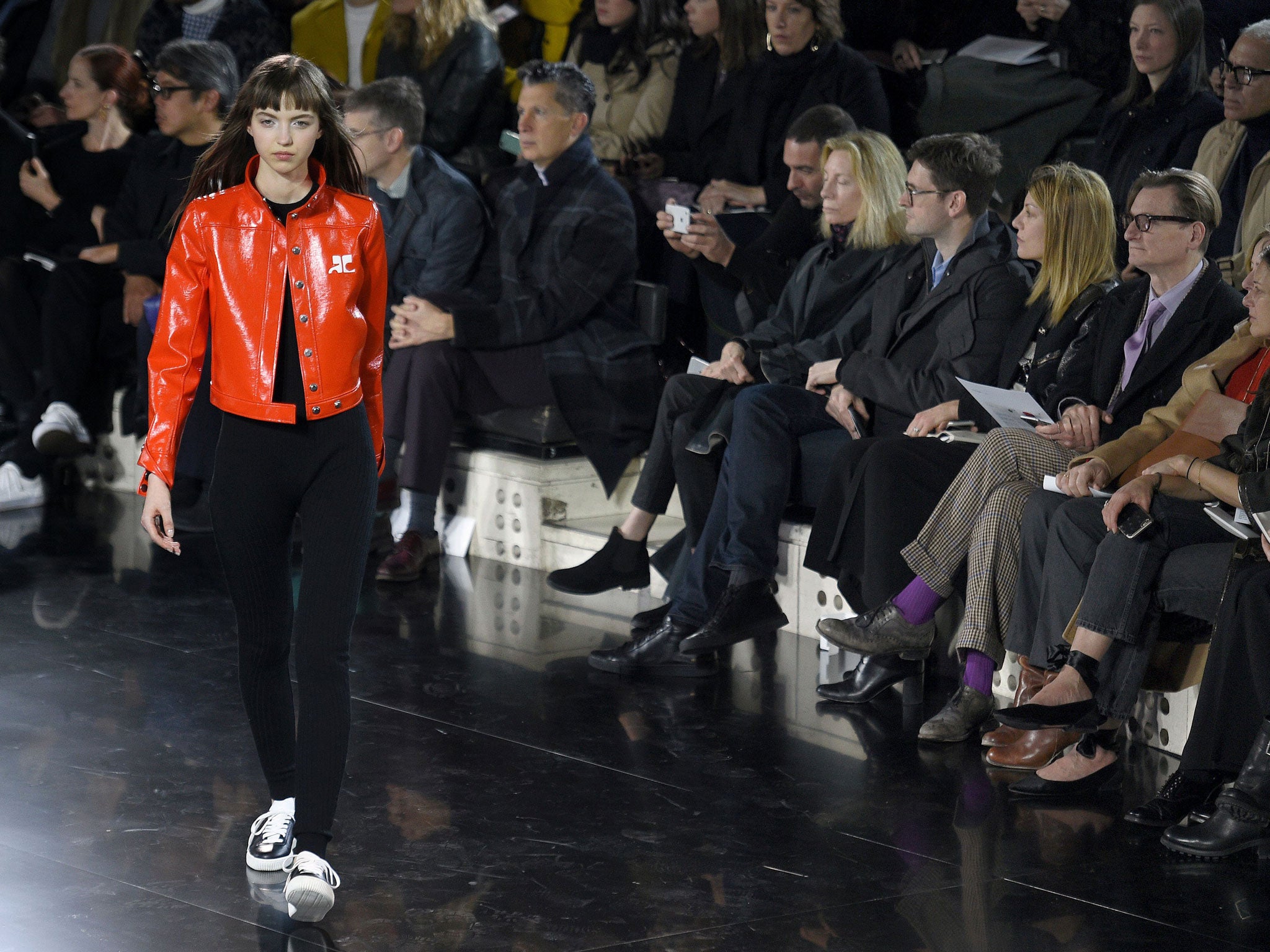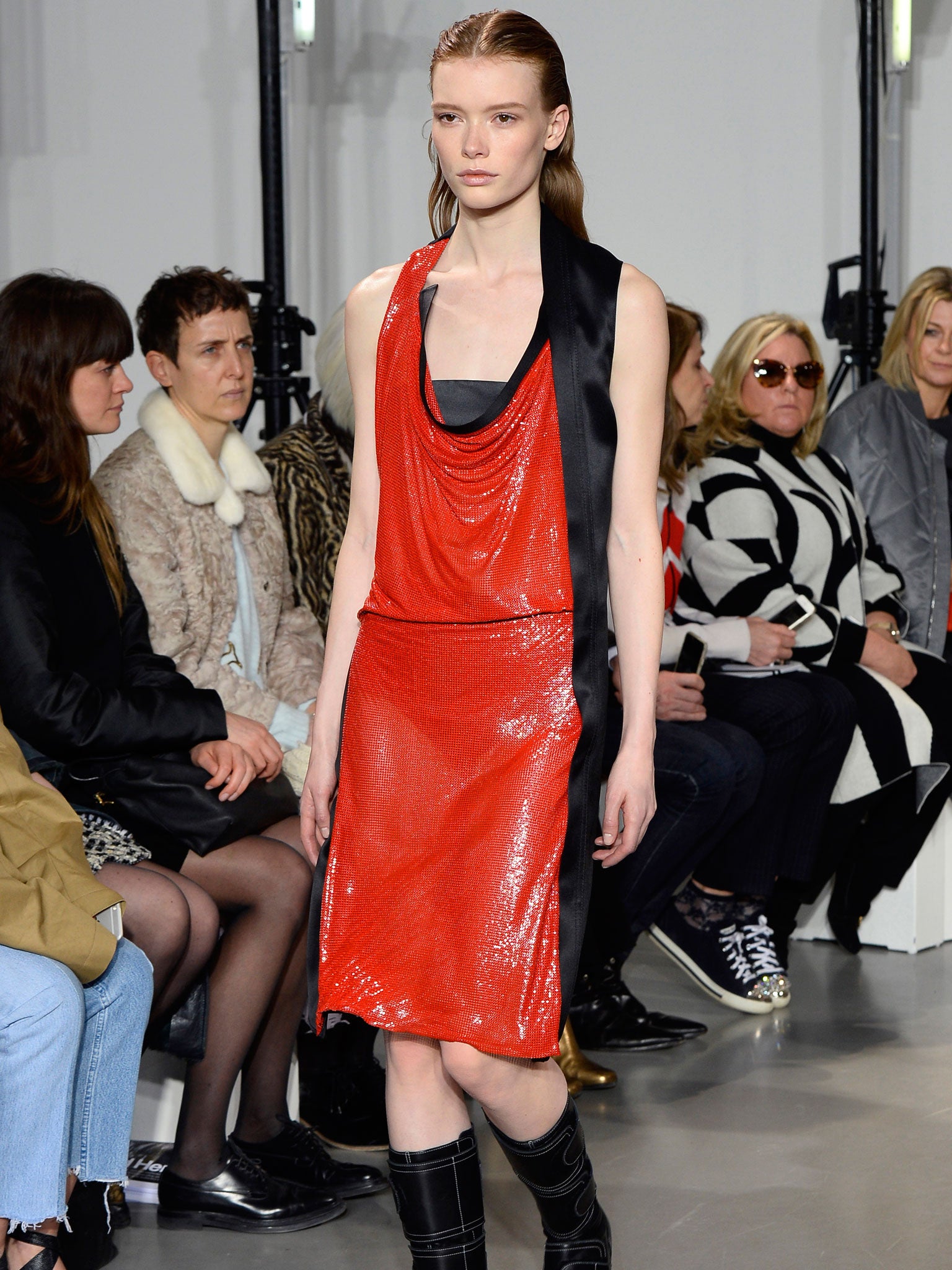Paris Fashion Week 2016: Old French brands have hired new French hands
The results are mixed, reports Rebecca Gonsalves from Paris

It's interesting how pervasive some ideas are: take Paco Rabanne's sleek sci-fi futurism, first touted in the 1960s, as a prediction of how we would live and dress now. The astronaut Scott Kelly, who returned to earth today after almost a year on the International Space Station, has proved just how optimistic that aesthetic was, with his bulky space suits – elaborate constructions designed to contain the technology to sustain life in orbit. That divergence between ideas and reality can be applied to some of the storied French houses that are currently showing their vision for next season. Or are they?
Despite the protestations of Ralph Toledano – president of the Fédération Française de la Couture, du Prêt-à-Porter des Couturiers et des Créateurs de Mode, the French body that oversees the fashion industry – that a "see now, buy now" approach would not be operating at this Paris fashion week, there are in fact many brands adopting the tactic. Paco Rabanne, in the hands of Julien Dossena since 2013, today showed a collection that included four looks that were already available to pre-order in the brand's Paris boutique by the time they appeared on the catwalk. (Parisian billboards were pasted with a campaign shot months beforehand by Patrick Demarchelier.)
Dossena has proved adept at bringing the house back to life and getting people talking about, and wearing, the Rabanne brand once again. His work since his appointment as the third creative director in as many years suggests that the third time is indeed the charm. Dossena's fast-paced show today included sporty details such as zips and drawstrings, and paid more than lip service to the founder's original vision, with silver leather motocross boots and chainmail pieces, including one scarlet dress that clung to the body just so. But there is more to it than a gentle stroll through the archives. Dossena has created a well-rounded wardrobe of tailoring, evening wear and much in between that will appeal to modern day shoppers. His vision appears to have struck a contemporary chord.
Immediacy was also the watchword at Courrèges, another Sixties-founded and recently revived label. The sophomore collection from Sebastien Meyer and Arnaud Vaillants was shown on Wednesday, dubbed "ready to live" after the fact that a third of the wares would be immediately available. The young designers are respectfully wedded to the ideas of the founder, André Courrèges, both in terms of aesthetic – miniskirts, second skin jumpsuits – and an embrace of technology and the possibilities it promises. As such, the duo showed clever technical pieces, not least slim, single-breasted coats equipped with a form of central heating, fired up by a glowing power button on a sleeve: just the thing should you be waiting at a bus stop in Burnley come November.
Realistically, though, how many of the brand's customers will find themselves in that situation? Not many, if the surprisingly high prices for the current collection are an indicator. They may not be stratospheric in fashion terms but when the target customer seems so pointedly youthful, one has to wonder where they might find the money for an £800 jacket, and whether they would be willing to spend it on what, for all the buzz and acclaim, is still a relatively obscure label.

There's an inherent difficulty in reviving old brands, hence no single route to success. The problems? That heritage of a house can be a heavy load for a designer to bear, to reflect and to resurrect; and that without the value of strong name recognition, it's tough to gain traction and sales. Have consumers ever been so spoilt for choice in what they buy and from whom? What matters above all is the right clothes at the right price, available to purchase at the right time.
Carven is a case in point: once a couture label, pricing is now largely accessible (hundreds, rather than thousands) and much of the brand's business is built on the entry level pieces – small bags and sweatshirts – that are within reach of the customer attracted to their young aesthetic. Today, Alexis Martial and Adrien Caillaudaud presented their third season at the house (it's a small world: Martial previously held a creative director role at Rabanne, before its current renaissance), and they seem to be treading much the same path as their predecessor Guillaume Henry, now installed at Nina Ricci. If it ain't broke, why fix it?
But these seemingly never-ending personnel changes – including the lack of a leader at both Lanvin, which showed late last night, and at Christian Dior, which shows today – are enough to send the head spinning. And without a strong direction, they'll fail to set the tills ringing no matter how quickly they can get stock on the shelves.
Join our commenting forum
Join thought-provoking conversations, follow other Independent readers and see their replies
Comments